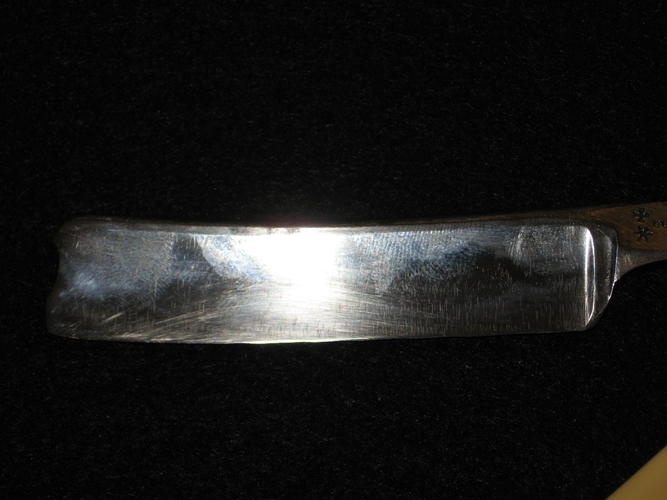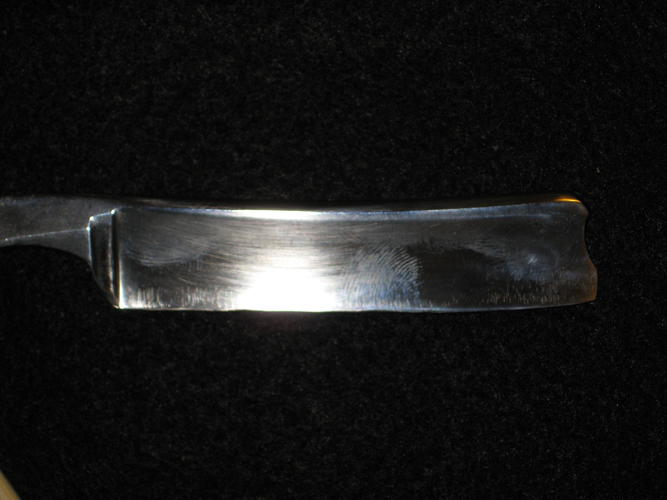Results 1 to 10 of 21
Threaded View
-
01-01-2015, 04:13 PM #1
 "The Survivor" Suggestions Please
"The Survivor" Suggestions Please
So here is my latest project, I call her The Survivor. I picked it up at an antique store this last weekend. It was in rough shape, rusty, and the worst of it was that someone had used a grinder to probably try and sharpen it. But, It is a Joseph Rodgers & Sons with ivory scales (cracked at the pivot but serviceable) so I thought I'd see what I could do. It was cheap enough at $25. So with wet/dry paper I took it up through the progression of grits, 0000 steel wool with MAAS polish, then just MAAS on a cotton ball. As you can see in the photos, from the grinder the edge is VERY wavey. The heel 13/16 and increases to 14/16 at the toe. Another consideration is that the blade is a near wedge, maybe quarter hollow. So how would you shape the edge? Straighten the edge and keep it increasing in width to the toe so it is uneven? Straighten with even width?




 17Likes
17Likes LinkBack URL
LinkBack URL About LinkBacks
About LinkBacks






 Reply With Quote
Reply With Quote